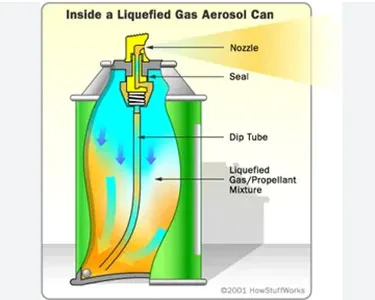The Safety of Aerosol Can
Aerosols have become ubiquitous in modern life, such as air fresheners, spray paints, lubricants, car care products, etc. that we know well and the safety of aerosol cans provides convenience and ease of use in a variety of applications. While these pressurized containers provide numerous benefits, concerns have been raised about their safety. In this article, we will explore the safety aspects of aerosol cans, examining the potential risks they pose and the precautions necessary to ensure their safe use.
Understanding Aerosol Cans
Aerosol cans consist of a container, a propellant, and the product itself. When the valve is pressed, the propellant exerts pressure, forcing the product out of the container in the form of a fine mist, foam, or spray. The propellant is often a liquefied gas or compressed air, and it serves as the driving force behind the product’s dispersal.


Aerosol Can Safety Issues and Risks
Flammability: One of the primary safety concerns associated with aerosol cans is their flammability. Since the propellant is typically a highly flammable gas, mishandling or improper storage of aerosol cans can lead to fires or explosions. It is crucial to keep aerosol cans away from direct heat sources or open flames.
Inhalation Hazards: Some aerosol products may contain volatile chemicals that can be harmful if inhaled in large quantities or in poorly ventilated areas. Users should avoid breathing in the spray directly and should use these products in well-ventilated spaces.
Environmental Impact: The release of aerosol propellants can contribute to air pollution and the depletion of the ozone layer. Older aerosol propellants, such as chlorofluorocarbons (CFCs), have been largely phased out due to their harmful effects on the environment. Many modern aerosol cans now use more environmentally friendly propellants, such as hydrocarbons or compressed air.
Explosive Hazards: In some cases, aerosol cans can become explosive if exposed to extreme temperatures or if punctured. For example, leaving an aerosol can inside a hot car or attempting to open or pierce an aerosol can can be dangerous.
How to Store Aerosol Can Safely
Safe storage of aerosol can is crucial to prevent potential hazards and accidents. First, storage of aerosol can should be in a well-ventilated place with a stable temperature, away from extreme temperatures and sources of open flames. It is best to store aerosols in a dry environment to prevent metal can corrosion. Additionally, aerosols should be stored away from direct sunlight and high temperatures to prevent dangerous overheating of the tank. During storage, avoid hitting or crushing aerosol cans to prevent damage to the cans. To minimize risk, when storing aerosols it is necessary to ensure that the tank is intact and the valve is well sealed
The following are some of my summary points
1、Storage: Store aerosol cans in a cool, dry place away from direct sunlight, heat sources, and open flames. Do not store them in confined spaces or areas prone to high temperatures.
2、Ventilation: When using aerosol products indoors, ensure adequate ventilation to minimize the risk of inhaling harmful vapors.
3、Disposal: Do not puncture or incinerate aerosol cans, even if they are empty. Follow local recycling guidelines for aerosol can disposal.
4、Read Instructions: Always read and follow the manufacturer’s instructions and warnings on the aerosol can’s label.
5、Keep Out of Reach of Children: Aerosol cans should be kept out of the reach of children, as they may not fully understand the potential dangers associated with these products.
6、Use as Intended: Use aerosol cans only for their intended purpose, and avoid using them in ways not specified by the manufacturer.
Conclusion
Aerosol cans can be safe and convenient when used correctly and with proper precautions. Understanding the potential risks associated with these products is essential for ensuring their safe use. By following the manufacturer’s guidelines, storing them appropriately, and using them in well-ventilated areas, we can continue to enjoy the benefits of aerosol cans while minimizing potential hazards to ourselves and the environment.
More aerosol can safety arguments, opinions
1、What are aerosol cans, and why are they dangerous?
2、What safety hazard might occur if a partially filled aerosol can is exposed to excessive heat?
